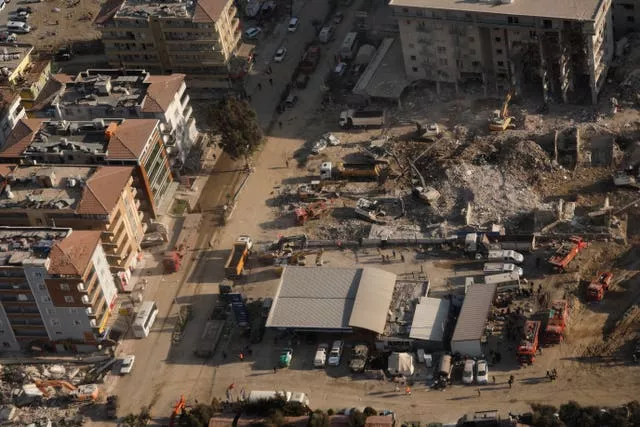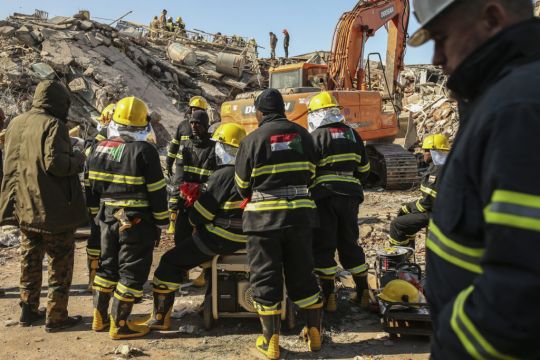A new 6.4 magnitude earthquake has killed three people and injured more than 200 in parts of Turkey that were laid waste two weeks ago by a massive tremor that killed tens of thousands.
Officials said more buildings collapsed, trapping occupants, and many people were injured in Turkey and Syria.
Monday’s earthquake was centred in the town of Defne, in Turkey’s Hatay province, one the worst-hit regions in the magnitude 7.8 quake that hit on February 6.
It was felt in Syria, Jordan, Cyprus, Israel and as far away as Egypt, and was followed by a second, magnitude 5.8 tremor.
Turkish interior minister Suleyman Soylu said three people were killed and 213 injured. Search and rescue efforts were under way in three collapsed buildings where five people were believed to be trapped.
A number of buildings collapsed in the new quake, trapping people inside, Hatay’s mayor Lutfu Savas said. He told NTV television they may have returned to homes or were trying move their furniture out of damaged properties.
Syria’s state news agency Sana said six people have been injured by falling debris in Aleppo.
In Hatay, police search teams rescued one person trapped inside a three-storey building and were trying to reach three others, HaberTurk television reported.
The February 6 quake killed nearly 45,000 people in both countries — the vast majority in Turkey, where more than a million and a half people are in temporary shelters. Turkish authorities have recorded more than 6,000 aftershocks.

HaberTurk journalists reporting from Hatay said they were jolted violently by Monday’s quake and held on to each other to avoid falling.
In the Turkish city of Adana, witness Alejandro Malaver said people left homes for the streets, carrying blankets into their cars. He said people were scared and “no one wants to get back into their houses”.
The Syrian Civil Defence group, known as the White Helmets, reported that several people were injured in Syria’s rebel-held north west after they jumped from buildings or were struck by falling debris in the town of Jinderis, one of the towns worst affected by the February 6 earthquake.
The White Helmets said several damaged and abandoned buildings collapsed in Syria’s north west without injuring anyone.
In the Syrian city of Idlib, frightened residents were preparing to sleep in parks and other public places, while fuel lines formed at petrol stations as people attempted to get as far as possible from buildings that might collapse.
The Syrian American Medical Society, which runs hospitals in northern Syria, said it had treated a number of patients — including a seven-year-old boy — who suffered heart attacks brought on by fear after the new quake.
Turkish vice president Fuat Oktay said inspections for damage were under way in Hatay, and urged citizens to stay away from damaged buildings and to carefully follow rescue teams’ directions.

President Recep Tayyip Erdogan visited Hatay earlier on Monday and said his government would begin constructing close to 200,000 new homes in the quake-devastated region as early as next month.
He said the new buildings will be no taller than three or four storeys, built on firmer ground and to higher standards and in consultation with “geophysics, geotechnical, geology and seismology professors” and other experts.
The Turkish leader said destroyed cultural monuments would be rebuilt in accordance with their “historic and cultural texture”.
Mr Erdogan said around 1.6 million people are being housed in temporary shelters.
The Turkish disaster management agency AFAD on Monday raised the number of confirmed deaths from the February 6 earthquake in Turkey to 41,156. That increases the overall death toll in Turkey and Syria to 44,844.
Search and rescue operations for survivors have been called off in most of the quake zone, but AFAD chief Yunus Sezer said search teams were continuing their efforts in more than a dozen collapsed buildings, mostly in Hatay province.







